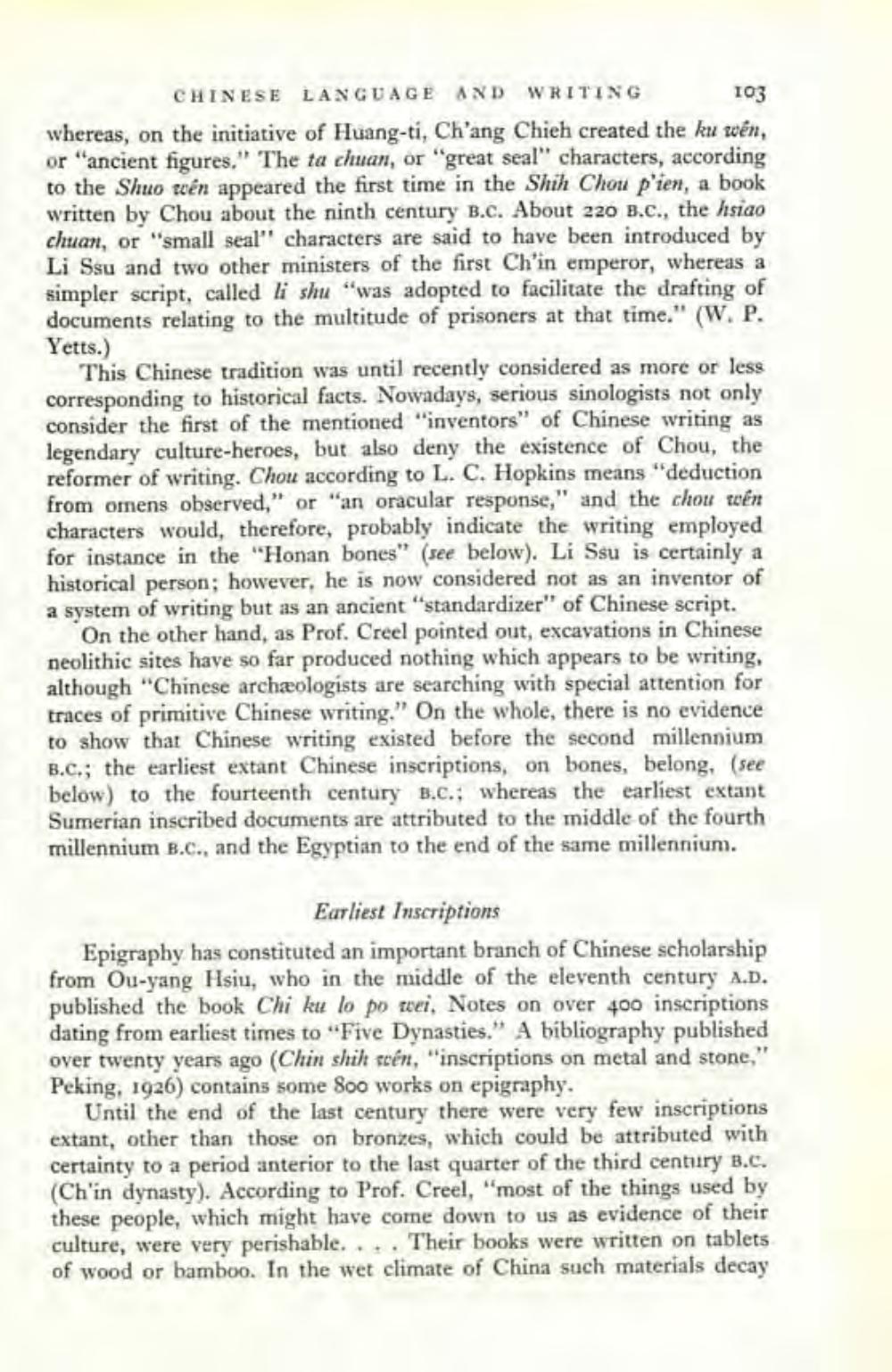________________
CHINESE LANGUAGE AND WRITING
103
whereas, on the initiative of Huang-ti, Ch'ang Chieh created the ku wên, or "ancient figures." The ta chuan, or "great seal" characters, according to the Shuo wen appeared the first time in the Shih Chou p'ien, a book written by Chou about the ninth century B.C. About 220 B.C., the hsiao chuan, or "small seal" characters are said to have been introduced by Li Ssu and two other ministers of the first Ch'in emperor, whereas a simpler script, called li shu "was adopted to facilitate the drafting of documents relating to the multitude of prisoners at that time." (W. P. Yetts.)
This Chinese tradition was until recently considered as more or less corresponding to historical facts. Nowadays, serious sinologists not only consider the first of the mentioned "inventors" of Chinese writing as legendary culture-heroes, but also deny the existence of Chou, the reformer of writing. Chou according to L. C. Hopkins means "deduction from omens observed," or "an oracular response," and the chou wen characters would, therefore, probably indicate the writing employed for instance in the "Honan bones" (see below). Li Ssu is certainly a historical person; however, he is now considered not as an inventor of a system of writing but as an ancient "standardizer" of Chinese script.
On the other hand, as Prof. Creel pointed out, excavations in Chinese neolithic sites have so far produced nothing which appears to be writing, although "Chinese archæologists are searching with special attention for traces of primitive Chinese writing." On the whole, there is no evidence to show that Chinese writing existed before the second millennium B.C.; the earliest extant Chinese inscriptions, on bones, belong, (see below) to the fourteenth century B.C.; whereas the earliest extant Sumerian inscribed documents are attributed to the middle of the fourth millennium B.C., and the Egyptian to the end of the same millennium.
Earliest Inscriptions
Epigraphy has constituted an important branch of Chinese scholarship from Ou-yang Hsiu, who in the middle of the eleventh century A.D. published the book Chi ku lo po wei, Notes on over 400 inscriptions dating from earliest times to "Five Dynasties." A bibliography published over twenty years ago (Chin shih scén, "inscriptions on metal and stone," Peking, 1926) contains some 800 works on epigraphy.
Until the end of the last century there were very few inscriptions extant, other than those on bronzes, which could be attributed with certainty to a period anterior to the last quarter of the third century B.C. (Ch'in dynasty). According to Prof. Creel, "most of the things used by these people, which might have come down to us as evidence of their culture, were very perishable.... Their books were written on tablets of wood or bamboo. In the wet climate of China such materials decay




